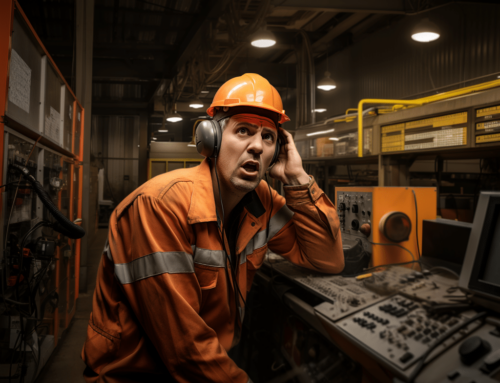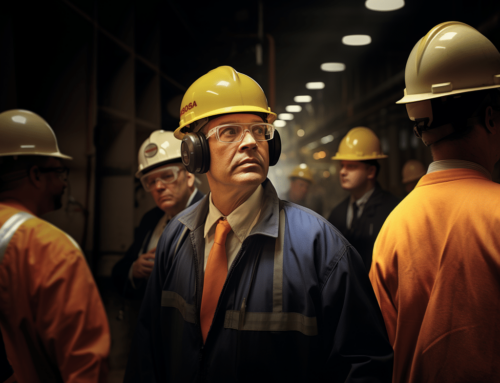Understanding Different Sorts of Safety Equipment in the Workplace
As job tasks diversify, so do the potential workplace hazards – making personal protective equipment (PPE) essential for health protection.
From safety goggles to harnesses, and from earplugs to respirators, PPE encompasses an array of devices designed to shield workers from injury or exposure.
Intrigued about how PPE operates on your worksite?
Keep reading to navigate a primer on safety equipment, its role in safeguarding work conditions, and best practices for its utilization.
Defining Personal Protective Equipment (PPE)
The foundation of workplace safety rests upon personal protective equipment, also known as PPE. For varying job tasks, different measures of protection are required to keep the working individual out of harm’s way.
Picture a worksite where molten metal is being manipulated. In such conditions, it’s not just body protection but head protection is also indispensable, requiring safety helmets, welding shields, and respirators for health protection against inhaling harmful particles.
Imagine an active workspace where risks abound for eye injury, necessitating robust eye protection such as safety glasses with side shields or face shields, approved by the American National Standards Institute. Equally important is ear protection, whether using earplugs or earmuffs, to bolster hearing protection.
Personal protective equipment encompasses a wide array of tools. These could vary from safety shoes that protect against foot injuries, bump caps for minor head bumps, and even harnesses to prevent falls in elevated work conditions. All play a critical role in ensuring worker safety.
Significance of Safety Equipment in the Workplace
The priority of every job should be the minimization of employee exposure to workplace hazards. Engineering controls might reduce risks, but the ultimate safeguard lies in correctly using personal protective equipment.
Ranging from safety footwear to face masks, PPE works as the last line of defense against injuries. Especially under extreme work conditions, harnesses and safety helmets provide a much-needed barrier against physical harm.
Contrary to belief, PPE is not just about body armor. Lesser noticed yet essential equipment like ear protection, eye protection, and respirators can have a profound impact on limiting long-term health hazards.
The bylaws prescribed by administrations such as The National Institute for Occupational Safety and Health and the Occupational Safety and Health Administration stand testament to the importance of PPE. Worker safety takes precedence over all other aspects in a worksite scenario.
Classification and Examples of Workplace Safety Gear
The categorization of workplace safety gear usually follows the part of the body it protects. For instance, head protection is usually catered to by bump caps and safety helmets to shield the skull from impact.
Eye protection is another crucial arena, requiring safety glasses or goggles. Additionally, to shield the face from sparks or flying debris, face shields or welding shields become a preventive necessity.
Ear protection, perhaps taken less seriously, can’t be overlooked considering the impact of noise pollution at worksites. Items like ear plugs or earmuffs ensure hearing protection from intense noise levels.
Then there’s personal protective equipment for the body and feet. Ranging from harnesses to safety shoes, these gears provide critical protection from falls and foot injuries. Remember, the importance of PPE can’t be understated in promoting worker safety.
Adopting Correct Use of PPE
While providing the right personal protective equipment to workers is important, it’s equally critical that the equipment is used correctly. Often, employees may not be aware of the correct usage or the necessity to wear such equipment during specific job tasks.
Therefore, it becomes imperative to train employees in the correct use and importance of PPE. Both respirators and breathing equipment should fit properly, safety glasses should cover the eyes completely, and safety footwear must be of the right size and offer adequate protection.
Apart from using personal protective measures, maintaining good work practices also plays a vital role in ensuring a safe workspace. Following standard protocols, recognizing workplace hazards before commencing work, and performing hazard assessments can considerably reduce the commuting risk.
Workplace safety is a collective responsibility and everyone’s commitment to safe behaviors can generate a great protection shield. Regular risk assessments and ongoing safety training can help to create a safety culture and minimize occupational injuries. Let’s make safety an integral part of our work culture!
Maintaining and Inspecting Safety Equipment
Maintaining and inspecting safety equipment should be a routine task at a worksite. Personal protective equipment can only serve its purpose effectively when it’s in good working condition and fits the user correctly.
Regular maintenance, cleaning, and inspection should be conducted on equipment including, but not limited to, safety goggles, respirators, and safety helmets. This ensures they function well while also prolonging the lifespan of the gear.
On noticing even slight wear and tear, replacement or repair should be considered immediately. For instance, safety glasses with side shields or ear plugs should be replaced if they show any signs of damage.
The responsibility of maintenance doesn’t just fall upon the users. Employers should ensure the existence of maintenance schedules for PPE and provide replacements when needed. A proactive approach in maintaining safety equipment goes a long way in securing worker safety.
Resources for Further Education on PPE Usage
For those keen on learning more about personal protective equipment, there are numerous resources available. Institutions like the American National Standards Institute and the National Institute for Occupational Safety and Health offer plenty of educational material.
The Occupational Safety and Health Administration not only provides safety standards but also guidelines on how to use and maintain PPE. They offer resources in various languages, including Español, making the information accessible to a broad audience.
Professional webinars and workshops, guided by industry experts, can also be a useful way to improve knowledge on PPE. Practical demonstrations on the use and maintenance of safety gear like harnesses, respirators or safety shoes can be highly beneficial.
Finally, participating in community forums on worker safety provides real-world insights into difficulties faced and their solutions. After all, the best education comes from sharing knowledge, and a safer workspace benefits everyone.
Conclusion
Understanding different sorts of safety equipment in the workplace is an indispensable aspect of ensuring worker safety.
From minimizing risks posed by workplace hazards to protecting different parts of the body, personal protective equipment plays a vital role.
The correct use, regular maintenance, and timely replacement, all make the gear effective in securing workers.
Continuing education about PPE, aided by numerous resources from reputable institutions, can further strengthen safety at workplaces.







